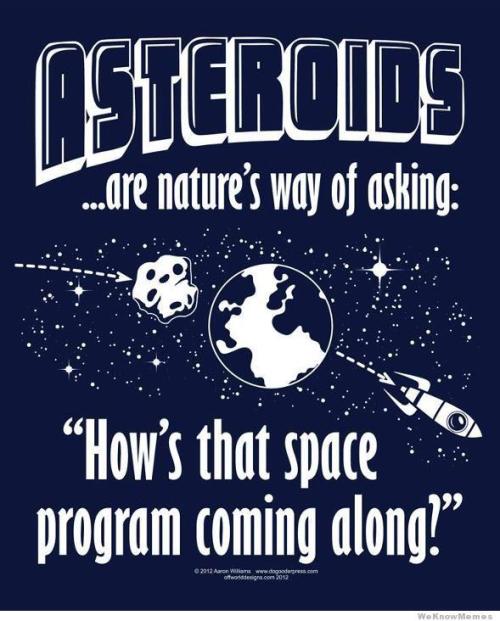Another trip around the Sun means another opportunity to celebrate Asteroid Day! On this June 30, let's look at the space rock discoveries made within the last year. Here's a quick recap of the asteroids added to our tracking catalogue in the last 12 months.That's exactly the kind of summary of asteroid discoveries along with exactly the preview image I want for this entry. Thank you, Science Museum of Virginia! For that, I've now subscribed to your YouTube channel.
Next, I'm sharing videos about three missions NASA is taking or will take to asteroids this year, beginning with Explained: NASA's asteroid-deflecting DART mission from Reuters.
NASA’s DART spacecraft began a 10-month journey into space on a mission to demonstrate the world's first planetary defense system. It is designed to deflect an asteroid from a potential doomsday collision with Earth[.]This is the mission that I featured the past two Asteroid Days and the past two Apophis Days. It's also the mission I'm featuring today that will return its results first. Watch for my post on them, as early as this September or as late as the year in space in December.
Follow over the jump for two more asteroid missions.
Next, DW News reported NASA launches 'Lucy' space probe to find origins of solar system last October.
How do you make a solar system? NASA has launched a new mission to try and answer that question.Congratulations (kongratuliere) to DW News for such a comprehensive and compelling space and science report!
"Lucy" lifted off from the Kennedy Space Center in Florida. The probe will spend the next 12 years studying asteroids near the planet Jupiter. The space rock is leftover debris from the formation of our solar system. It's hoped the close encounters will reveal clues about how we got here.
One hour after take-off, Lucy is set to unfold its solar panels. Each one has a diameter of more than seven meters. The enormous size of these panels gives Lucy the energy needed to penetrate deeper into our solar system than any other previous space probe. Lucy is headed to Jupiter and the so-called Trojan asteroids that circle it. These celestial bodies are locked into Jupiter's orbit around the sun by the planet's intense gravity field.
The Trojan asteroids are distributed in two separate, elongated regions situated ahead of and behind Jupiter.
Images from the Hubble Space Telescope show that these asteroids might originate from different places in the solar system. They have different colors and reflect light differently.
The asteroids appeared about 4.5 billion years ago. They are thought to have originated in the early days of the solar system’s formation. But the asteroids are still made up of their original matter, whereas the planets have continued to evolve over the years.
The space probe Lucy is set to observe a total of seven asteroids. To achieve this, it must negotiate some complex flight maneuvers. First it will gain momentum by circling the earth twice, before it launches out into deep space.
The journey will take until August, 2027. Once in deep space, Lucy will be able to observe the first four asteroids during a fly-by.
Then it will set course for Earth, where it will once again gain momentum for a second journey to gather information on a different cluster of asteroids.
The spacecraft is programed to observe the surface of these different worlds, searching for ice and substances that may have led to forms of life. Scientists hope it can them research the possible origins of matter.
They're hoping this will shine new light on the early stages of our solar system.
I give NASA the final video slot to explain NASA's Psyche Mission to an Asteroid: Official NASA Trailer.
Join the journey as NASA’s Psyche mission team launches in 2022 to explore a unique metallic asteroid orbiting the sun between Mars and Jupiter. The asteroid, likely made largely of nickel-iron metal mixed with rock, could contain metal from the core of a planetesimal (the building block of an early rocky planet) and may offer a unique window into the violent history of collisions and accretion that created the terrestrial planets like Earth.While Lucy is looking for the building blocks of planets, Psyche is trying to find out what happens when a terrestrial planet develops. Both are great examples of the comparative method in planetary astronomy and geology. Again, I'm looking forward to the results.
Arizona State University leads the Psyche mission. JPL, which is managed by Caltech for NASA, is responsible for the mission’s overall management, system engineering, integration and test, and mission operations. Maxar Technologies in Palo Alto, California, provided the high-power solar electric propulsion spacecraft chassis.
I conclude today's entry with this meme I got from my friend Nebris to remind my readers of the importance of a space program to protect against threats coming from outside the planet.

Welcome to everyone coming here from Infidel753's Link round-up for 3 July 2022! Thank you for stopping by!
ReplyDelete